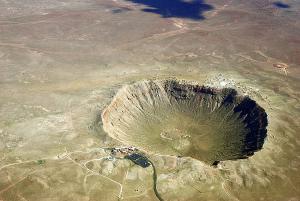Blog
Hit Me
23 April 2014
Yesterday the B612 foundation released a video showing 26 meteor impacts with energies ranging from 1 kiloton to 600 kilotons. They were detected by the global nuclear weapons test network. The claim is that these meteor impacts are occurring much more frequently than originally thought, and they are in the energy range of atomic bombs. By comparison, the nuclear weapons dropped on Japan during World War II were in the 15 – 20 kiloton range. The message the video conveys is that we have vastly underestimated the very serious risk of death be meteor. The reality isn’t nearly so sensational.
The B612 foundation is a U.S. nonprofit organization trying to raise money to launch a satellite to look for meteors that threaten Earth. As B612’s founder Ed Lu states, “The fact that none of these asteroid impacts shown in the video was detected in advance is proof that the only thing preventing a catastrophe from a ‘city-killer’ sized asteroid is blind luck.” This is technically true, but it’s true in the same way that the fact you haven’t been struck by lightning is blind luck. There is a real and legitimate risk that a meteor could impact a city with enough energy to do grave damage, but the odds are not very high. The number of impacts recorded by the nuclear test network is about what we would expect given our understanding of meteor impact rates. So no, this new video doesn’t mean a city impact is much more likely.
Part of what the video actually shows is just how remote much of the Earth really is. From 2001 to 2013 there were 26 sizable impacts on the Earth, but of these only 1 (the Chelyabinsk meteor in 2013) was widely observed. In our hyper-populated, hyper-connected world, the other 25 impacts were so remote or so small they were largely unnoticed. The Chelyabinsk meteor was an exception because it was not only in a populated region, it was particularly large. The estimated energy of Chelyabinsk is 500 kilotons, equivalent to about 25 atomic bombs.
 Shane Torgerson
Shane TorgersonAlthough these impact explosions have roughly the energy of a nuclear weapon, the comparison is not a very good one. For one, a weapon is specifically detonated near the surface of the Earth for maximum destructive effect. Meteor impacts tend to lose much of their energy high in the atmosphere, which produces a great deal of light and noise, but generally not much damage on the ground. Even a large impact like Chelyabinsk produced only limited damage on the ground. Meteor impacts also don’t produce large levels of radioactive material in the way nuclear weapons do.
Just to be clear, projects like the one proposed by B612 are a good idea. There is a small risk of meteor collisions, and it would be good to be prepared. But the idea that we are unexpectedly at a high impact risk is simply false.